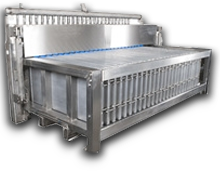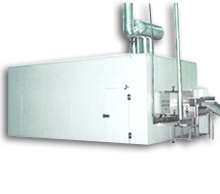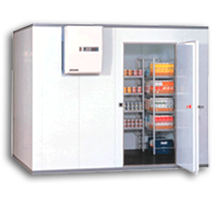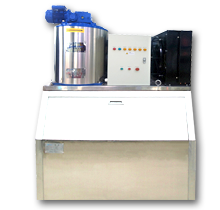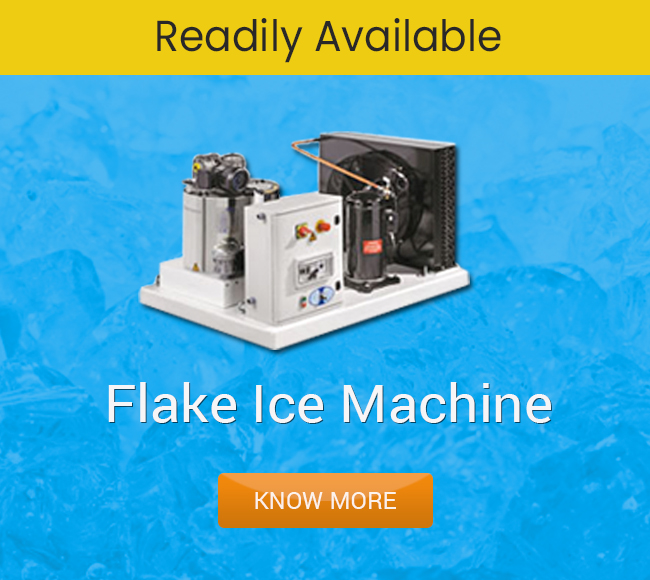Individual Quick Freezing (IQF) is a technology for freezing individual units of a product while keeping them separate from each other, unlike the bulk freezing of product by cold store freezing. For instance, freezing a batch of peas or berries in cold storage results in their clumping, which doesn’t happen in Individual Quick Freezing Machine.
Whereas cold freezing is used for large volumes of bigger sized products, IQF processing unit is ideal for rapid freezing of smaller products (peas, berries, pasta, small fruits, cheese etc.).
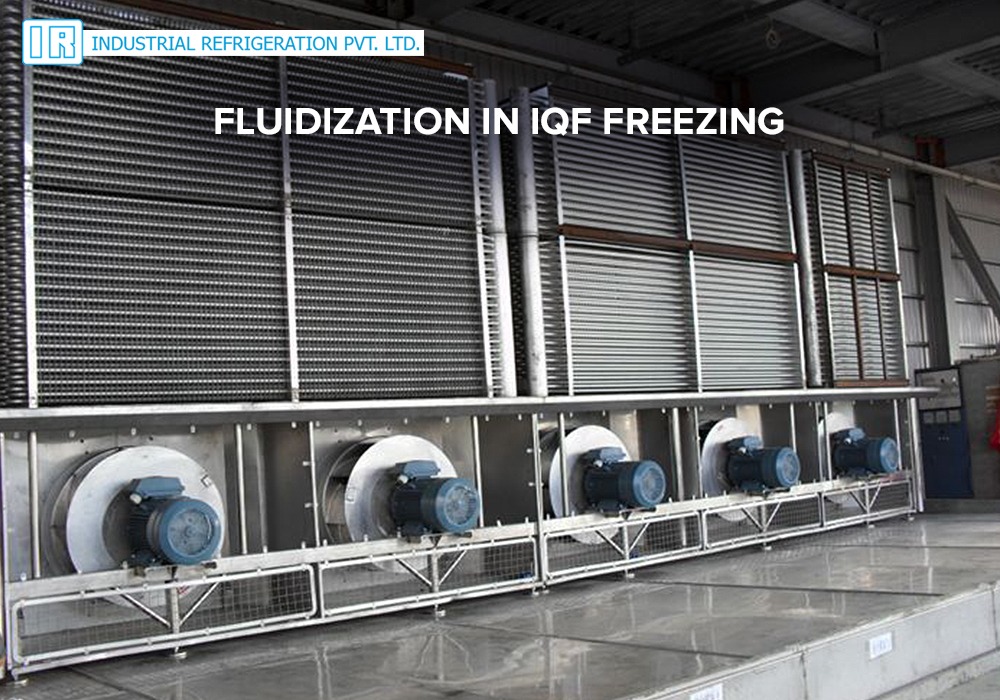
Fluidization Process in IQF Freezing
IQF freezers incorporate fluidization process in which particles (in our case, peas or berries of a batch) become fluidized (i.e. they move in a fluid-like fashion) when an extremely cold upward-flowing air imposes high drag on them against the pull of gravity in the freezer.
This leads to very quick freezing of the berries (or peas) with near zero ice crystals formation in them and preserves their structural integrity. For the very reason, IQF machines for fishes find vital utility in the seafood industry.
Types of Fluidization in IQF Freezing
There are 3 main types of fluidization prevalent in the IQF industry. These 3 types are used in different parts of the freezer. IQF machines for seafood, fruits and vegetables etc. employ these fluidization types.
- Circulating Fluidization:
This fluidization lifts the product units from the fluidization bed under extremely strong as well as cold inflow of air. The method is used for crust-freezing in the first stage of freezing the product units. - Bubbling Fluidization
Also known as semi-fluidized bed, this is a lighter version of the circulating fluidization & is used in the second stage of freezing.
Here, the extremely strong air inflow only partially lifts the product units from the fluidization bed plate. - Fixed Bed Fluidization
Fixed bed fluidization is used in the last part of the IQF freezer tunnel. It finish-freezes the product units. This fluidization leaves the product resting on bed, so it is suitable for freezing very brittle products which can’t be put to the risk of suspension in cold air blast.
Importance of Fluidization in IQF Freezing
Fluidization keeps the individual units of the product separated from each other, which also augments their faster freezing.
Different products have variation in characteristics like their firmness, water content, brix level etc. owing to which different types of fluidizations are needed to freeze them. Processors must adjust the fluidization for best possible appearance and separation of product units.
The correct fluidization will ensure that the product units maintain their nutrients and texture. Optimal fluidization speeds up the freezing process. This reduces dehydration in the product units thereby keeping their quality intact.
In IQF, the dehydration rate is from 0.3% to 2% whereas in cold storage freezing, the dehydration rate can be up to 10% which obviously results in quality loss of product.
Ensuring the Right Fluidization
In order to obtain right fluidization in the IQF machine, it is essential to understand the elements which play vital role in each part of the IQF freezer.
- Pay attention to the fans. Not all fan types aid in getting the right fluidization.
The vane axial fans provide flexibility of frequency conversion due to which the speed of fans can be controlled 100%. It can be varied as per the product units to be frozen.
IQF machines which don’t provide the possibility of frequency conversion have to somehow bypass the extra airflow which is just energy wastage in both the freezer as well as the refrigeration plant. - Pressure drop created on the bedplate matters significantly as it depends on the airflow strength produced by the fans & also on bedplate design.
The size & distribution of holes in the bedplate are crucial e.g. thick bedplate is need for allowing thicker holes. - Lastly, aerodynamics of the freezer body has to be considered. The fluidization control is directly dependent on build & design of the freezer body. Minimum parts & carefully deliberated obstruction to airflow are keys to precisely adjustable fluidization for each product units.
Why Choose IQF Freezing?
One of the many unwanted issues cropping up in usual cold storage freezing is discoloration of the product even if the product may be vibrant in appearance before freezing. When the product thaws after freezing in cold storage, it acquires a grayish tone. This problem is vanquished when IQF freezing is used.
Another undesirable thing is clumping of food & formation of large chunks of ice around it when it is put in the cold storage freezer. It requires considerable force to detach the frozen food items which depends on the size & stickiness of the products.
IQF freezes the product items individually which remain separated from each other until first defrost. So products maintain their shape for long and also have higher shelf lives.
Cold storage freezers employ boxes and trays for freezing products in big blocks of ice. Handling these boxes and trays require considerable manpower & the boxes & trays also need mechanical separation.
Cleaning & repair work of boxes and trays is extra drain on money.
Also, the product gets in contact with people in cold storages which can result in their contamination while they freeze. On the other hand, using an individually quick freezing machine guarantees zero contact between the products and humans.
Industrial Refrigeration Pvt. Ltd (IRL) is well-renowned as IQF manufacturers in India and for promoting them to various industries. The freezers come with stainless steel belts to freeze the outer crust of the product (case hardening as it is often called) and also for freezing completion. The belts are of variable speed such that the bed depth and retention times of the product in the tunnel can be altered.
Our freezers are made of aluminum & stainless steel and are equipped with MS Hot dip galvanized coils, high efficiency airfoil fans & factory assembled modules. They are easy to sanitize & maintain and guarantee trouble free operation.
We supply types of IQF freezers of capacities 150 Kg/H, 200 Kg/H, 500 Kg/H, 750 Kg/H, 1000 Kg/H, 1500 Kg/H & 2000 Kg/H, which can freeze products at temperatures up to -35°C and find applications in vegetable industry, fruits industry & sea food industry and they include:
For more info on different configurations of the fluid bed freezers we supply, reach out to us at IRL.


